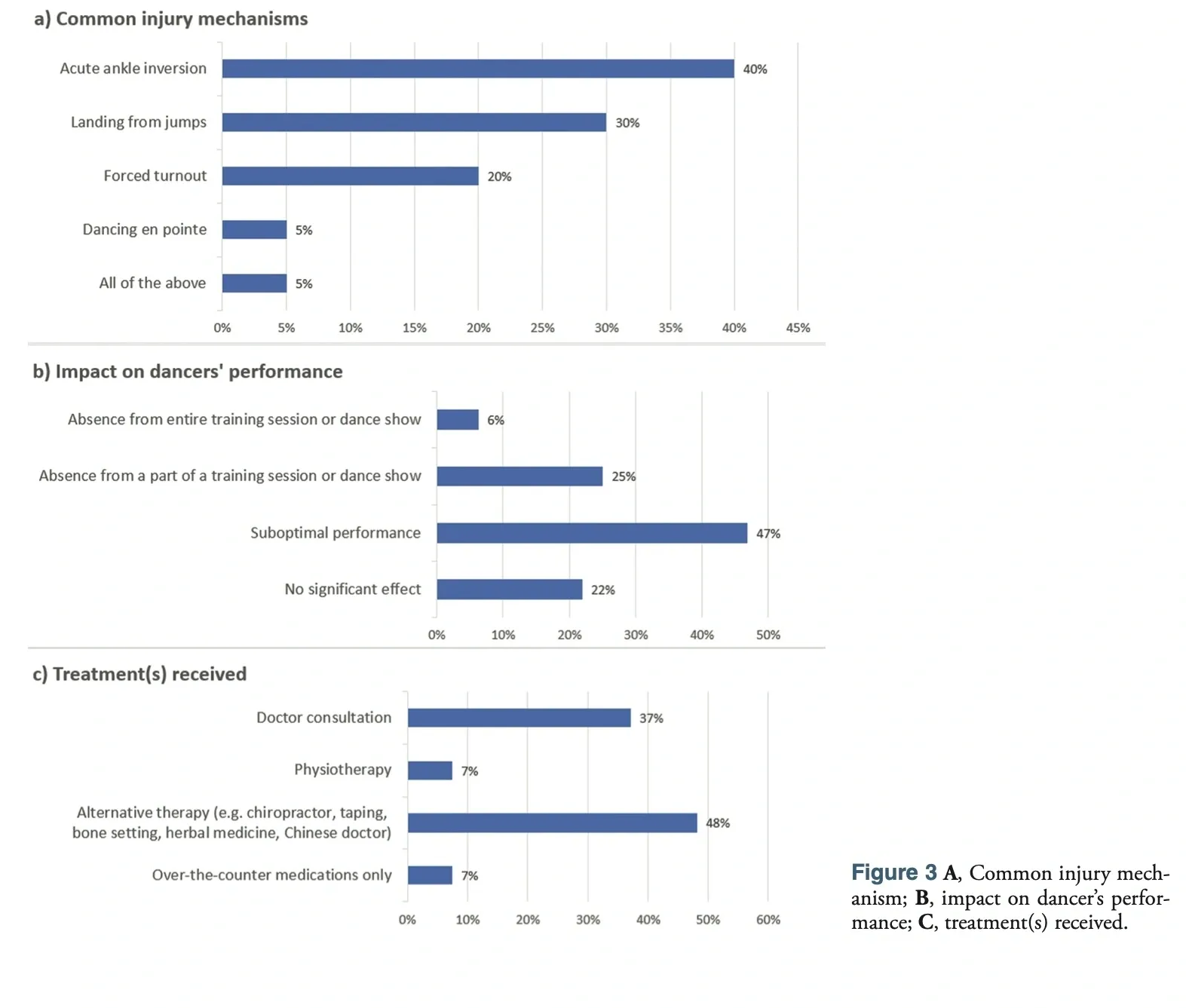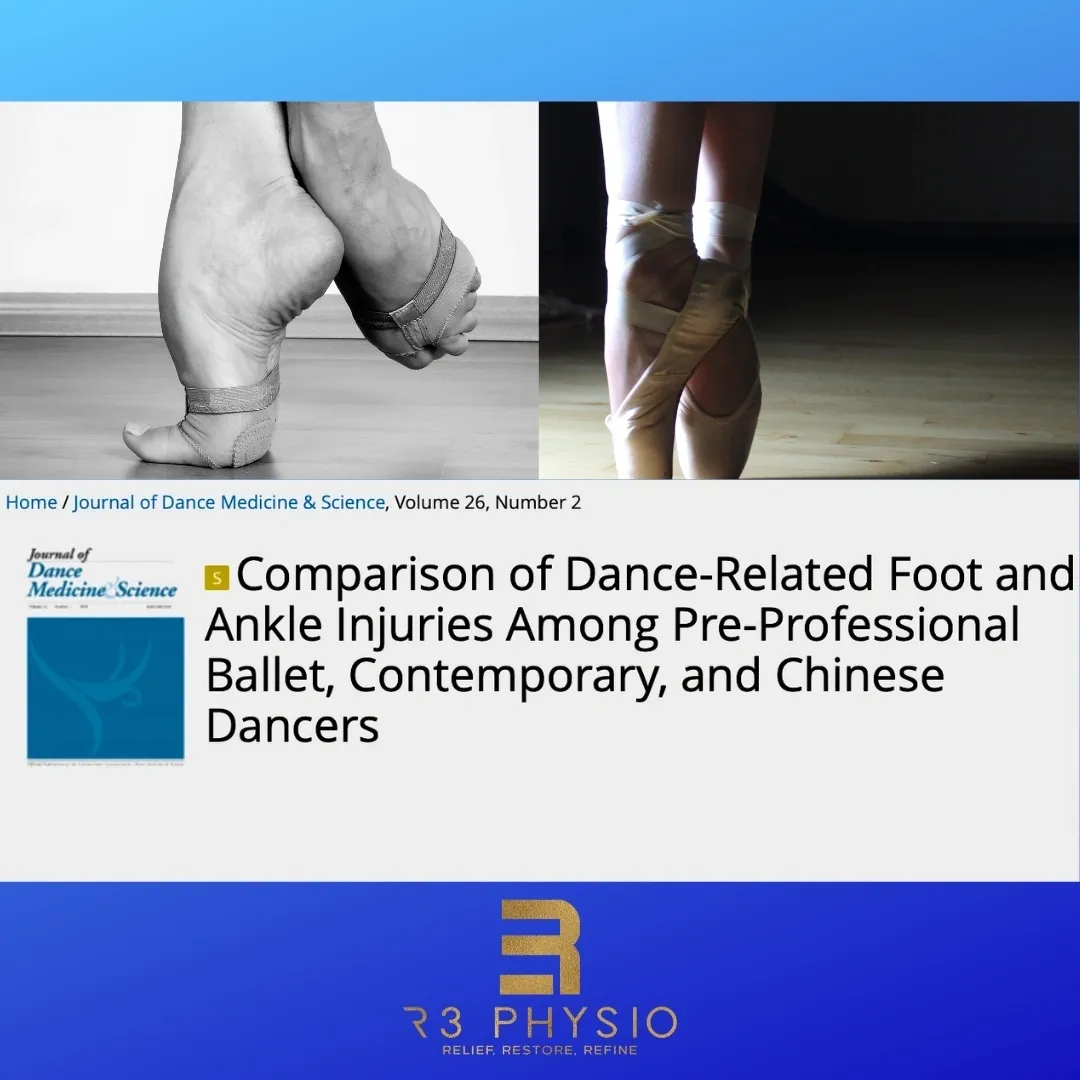Over the years of working with various levels of dancers, and through different genres, one of the most common injured areas we see are foot and ankle injuries.
That is probably no surprise to many of you as dance can be one of the most physically demanding activities, and at the same time very artistic! That means you work hard and make it look easy and graceful!
But what is always interesting is that, no matter the injury (sprain, strain, fracture, tendonitis, chronic, etc.), each injury is unique to the person and the action at the time of the injury.
One dancer may have an ankle sprain that happened during ballet, while another dancer had a sprain during contemporary, while another dancer was performing more in a musical theatre role and had to jump down from a table which caused the sprain. Other dancers may be nursing chronic injuries and pain (what we have seen a lot of over the years!).
While there will be some commonality in their injuries, there are different mechanisms to their injuries. Depending on the scenario, ballet involves different strength, control, and foot positions than contemporary or musical theatre. Contemporary typically means the dancer was barefoot and involves different movements. Musical theatre can be any number of scenarios!
So the structures of the the foot that allow those motions to happen need to be considered. Also, the dancer needs to be looked at more globally. Why did the injury happen? Was there something elsewhere in the body that made them more likely to be injured?
A recent study in the Journal of Dance Medicine and Science compared dance-related foot and ankle injuries through a few different genres of dance. They broke down the type of injury that happened based on the type of dance, and even broke down how those injuries affected the dancers performance, which the majority of the dancers reported having “sub-optimal” performances.

Sub-optimal performances! That is huge! One of the things that has always amazed me over the years while working with performers, is that no matter how many shows per week, or how many times the same performance has been done, the best performers make it look like it was the first performance every time! No dancer wants to give a “sub-optimal performance.”
Another interesting statistic that this paper looked at was which part of thee foot was injured, and during which type of dance. What is interesting to note is that the type of dance can absolutely play a role with which part of the foot is more likely to be injured. For example, there were more injuries to the forefoot (think front of foot: toes, long bones of the foot) with ballet and Chinese dance. But the actual ankle and hind foot (think heal area) had more injuries during contemporary. And the achilles tendon had by far more injuries during ballet, than either contemporary, or Chinese dance. (See chart below)

So why is that important? Understanding that all dance is not the same, and all dancers are not the same. It is important to work with someone that understands that each dancer is an individual, and that the genre of dance may change the specifics of the treatment needed to help return the dancer to their best!
If you are being treated like every other person that sprained their ankle, or injured their foot, how could you possibly get back to performing at your best? Find someone that will look at your specific scenario, and your specific injury, so you you don’t give “sub-optimal performances!”
Reference:
Lai JHC, Fung NPY, Yeung STW, Siu RWH, Pak NK, Surgenor B, Yung PSH, Ling SKK. Comparison of dance-related foot and ankle injuries among pre-professional ballet, contemporary, and Chinese dancers. J Dance Med Sci. 2022;26(2):134-42.




